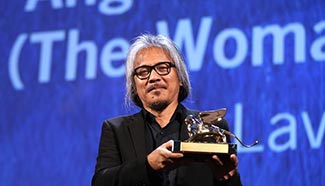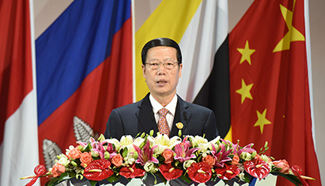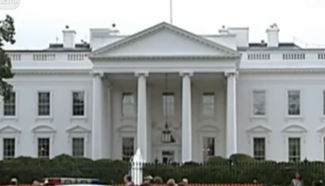BEIJING, Sept. 11 (Xinhua) -- China has made environmental protection and restoration a top priority in its development plan for the Yangtze River economic belt, a senior official said Sunday while discussing the national plan to boost the economy along China's longest river.
The development of the economic belt will follow a green path, with the strictest environmental protection and water resources management measures, according to an official with the leading group of the Yangtze River economic belt development.
The official said China aimed to markedly improve the environment of the economic belt by 2020, with over 75 percent of the region's water meeting Grade III standard or above and forest coverage to reach 43 percent.
China classifies water quality into six levels, from level I, which is suitable for drinking after minimal treatment, to level VI, which is severely contaminated.
By 2030, the region's aquatic environment and ecosystem will be much improved, the official said.
Environmental protection and green development are "of paramount importance" in the development of the economic belt, which should not be used as an excuse to kick off a new round of unfettered construction, said the official.
Limits will be put on water and environmental pollution, the official underscored, which will clearly define acceptable levels of pollutants.
To better protect the environment, administrative boundaries must be removed and the market be given a bigger role, the official said.
A "negative list" will be established in the economic belt, banning certain industries from the region.
A cross-regional, inter-department emergency response system will be set up to handle environmental incidents, while compensation will be given to encourage local governments to preserve the environment.
China's top leaders have, on many occasions, said that environmental protection will play a large part in the development of the Yangtze River economic belt, noting that no economic activities should cause any damage to the environment.
In addition to environmental protection, the official also unveiled other targets, including improving the river's traffic capacity, promoting innovation and industrial upgrading, boosting urbanization, advancing opening up and establishing a modern market economy.
The Yangtze River will be developed into a "golden waterway" by 2030. A low-carbon, integrated transport system will connect roads, railways and air routes by 2020, said the official.
By 2020 the region's spending on research and development will account for 2.5 percent of its GDP and it will be home to a group of world-class companies and industries.
The urbanization rate of the region's population will be 60 percent by 2020, while the quality and efficiency of its economy will be substantially improved.
By 2030, an innovative, modern industrial system will be fully incorporated and integrated along the river, making the economic belt a "strategic support" for national economic and social development, the official said.
China made it a national strategy to develop the Yangtze River economic belt in 2014. The move is expected to boost concerted development in riverside regions and provide new growth stimuli for China's slowing economy.
Revered as the nation's "Mother River," the Yangtze traverses eastern, central and western China and joins the prospering coastal regions with the less developed inland. It is one of the busiest inland rivers for freight traffic worldwide.
The Yangtze River Economic Belt involves nine provinces and two municipalities that cover roughly one fifth of China's land, accommodate a population of 600 million and generates more than 40 percent of the country's GDP.










